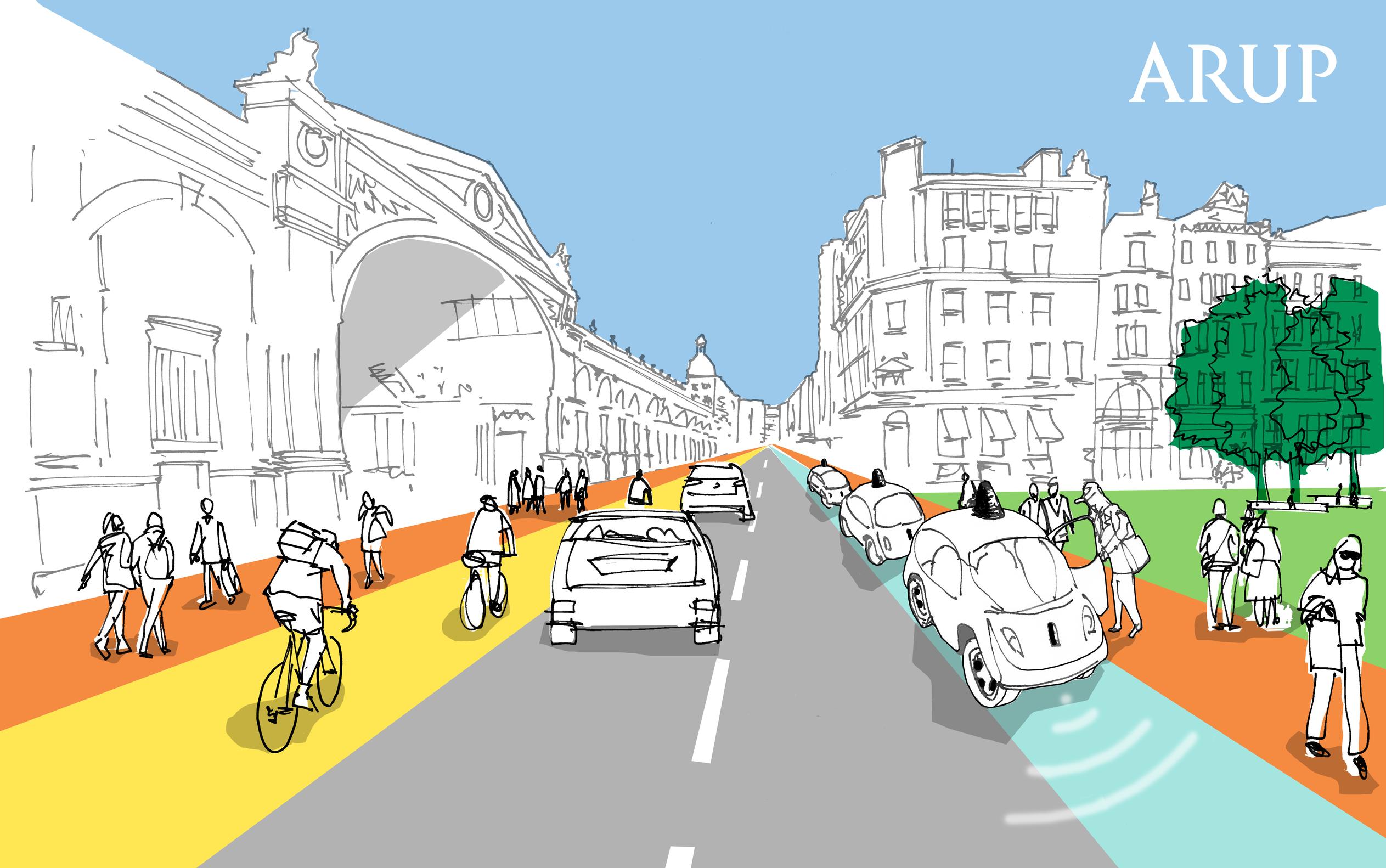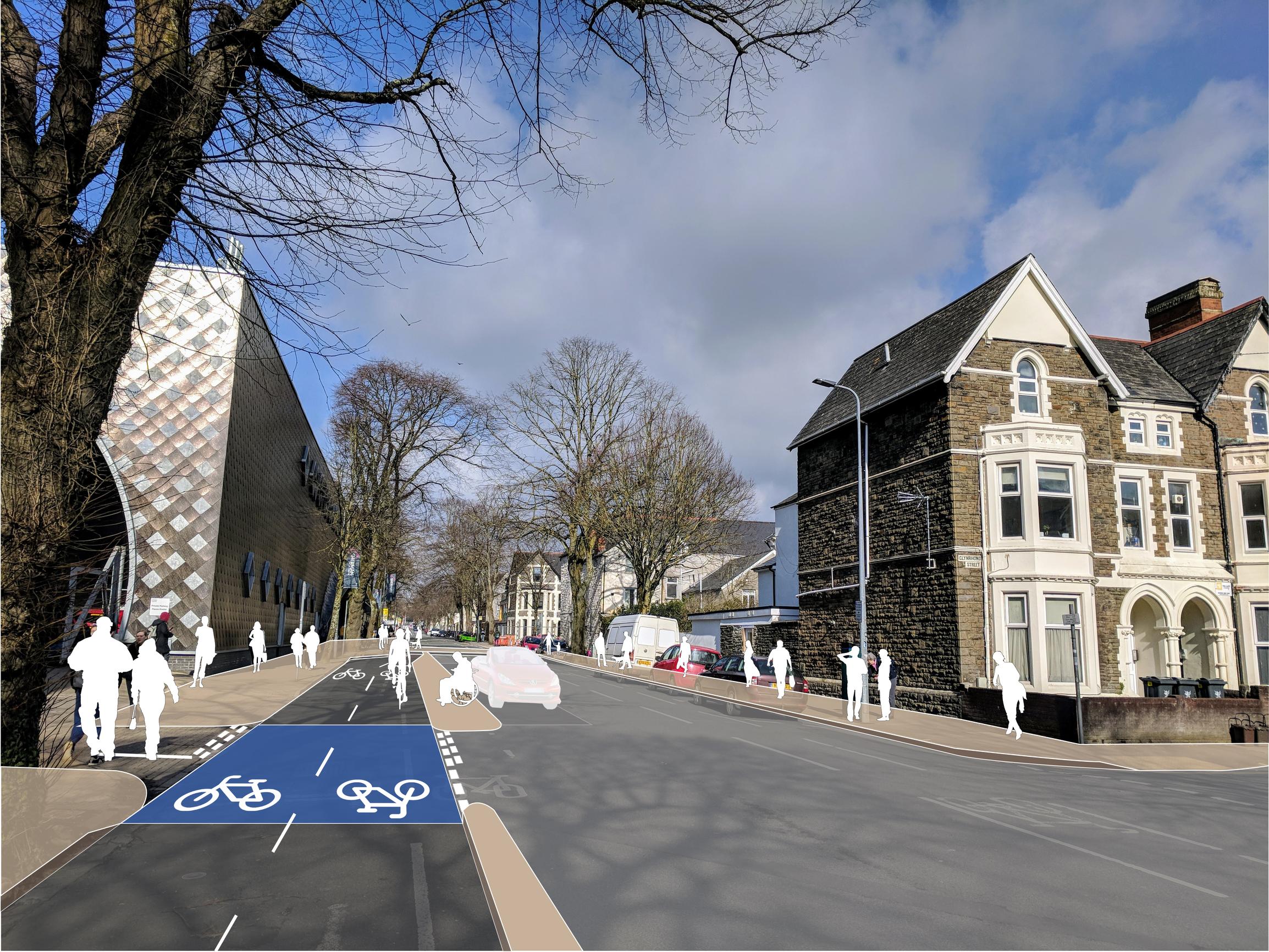


Transport involves more than getting efficiently from A to B; both the mode and the experience of the journey also affect travellers’ economic and social opportunities. It is inextricably linked to aspects of physical and mental health and wellbeing. The negative aspects are often the focus and under the political spotlight: stress, climate change, air pollution, and the subsequent impacts these place on the NHS through rapidly increasing rates of heart disease, obesity, diabetes and Alzheimer’s disease.
‘Active travel options are closely connected with health impacts and with social accessibility,’ says Newton. ‘I think things are beginning to move in the right direction. There's recognition that the health agenda is really important, and that transport is one investment that should be delivering positive health impacts further down the line. There are lots of opportunities for local authorities and local bodies to think about putting their budgets together in more creative ways.’
Political pledges, visions and policy aims need to be serviced alongside the delivery of physical infrastructure before cities can positively influence the types of journeys that travellers make, notes Newton. A complete system needs to be delivered, including policy ‘nudges’ to help change behaviour, and upskilling to allow cities to achieve the right blend of mobility choices. But the provision of effective infrastructure, enabling safe walking and cycling alone can go a long way, says Newton, as the example of Seville shows: cycling in the Spanish city increased dramatically from 0.5 percent in 2006 to 7 percent in under 10 years after a bike network was created almost from scratch. Dave notes: ‘mobility is intrinsic to the quality of life experienced in cities. For a long time, the car has directed how we plan and shape our urban areas. We now have the opportunity to put people back at the heart of our cities and drive a human-focused approach to the design of the built environment.’
It is important to acknowledge that, as technology continues to evolve and is incorporated into the built environment, it should not be to the detriment of walking and cycling infrastructure. One such example is the up-scaling of the electric vehicle network. There have been recent examples of badly thought-out electric vehicle charging points being installed on footways, restricting the functionality of the space. Arup has recently developed a concept to transform space to become a ‘parklet’, which includes facilities for electric bike charging, seating with mobile phone charging, wifi, parking for bikes and urban greening.
Changes in the way we travel may arise from the future use of autonomous vehicles. Arup has recently been awarded funding by the National Infrastructure Commission (NIC) as part of a competition soliciting ideas for the adaptation of UK roads for the introduction of connected and autonomous vehicles (CAVs). Arup’s ‘FlexKerb’ submission proposes intelligent kerbs whose permitted uses flexibly adapt throughout the day in response to real-time demand and local policy.
The health of urban dwellers can be ‘significantly improved’ by rethinking transport design, concluded a recent report by Arup, BRE, University College London and AREA Research. The study, Health + Mobility: A design protocol for mobilising healthy living, provides civic leaders, city planners and architects with a guidance protocol that can be applied in any urban setting. The report notes that a city’s transport network and mobility infrastructure includes everything from trains and buses to street lighting and benches. It also stresses that non-physical assets really matter: it’s a mixture of traffic reduction measures, coupled with supportive infrastructure for pedestrians, cyclists and public transport, that will result in the greatest benefits to local economies, social networks, health and the environment.
This high-level approach to how cities are designed should be considered by city leaders and design teams at the earliest stages, says Newton. Investment appraisal and any kind of economic analysis of different options must take into account the full range of benefits that active transport and high quality public transport systems have been shown to achieve, he adds. Thinking positively, this is a direction recently taken by the Department for Transport (DfT) as it expands the use of its Active Mode Appraisal Toolkit within WebTAG when developing Local Cycle and Walking Investment Plans (LCWIPs), for example.
There are huge sums attached to the transport agenda and, increasingly, new options are opening up through devolution, but there is an increasing understanding that we need to look at transport, health and education budgets coming together.
There is no shortage of evidence to demonstrate that active travel has considerable health benefits, as well as local economic benefits. The policy environment for the enabling of walking and cycling is gaining momentum, with the DfT's Cycling and Walking Investment Stratgey, LCWIPs and support for Mini-Hollands (often referred to as Liveable Neighbourhoods) across England. Yet in many places, initiatives supporting active travel are slow to materialise.
Research shows that, along with lack of alternatives, there are many reasons why active travel policies are slow to take shape: lack of evidence and monitoring, inadequate and inappropriate funding structures, and weak leadership. Yet there is evidence to convince decision-makers that walking and cycling delivers positive impacts. ‘We really need to be thinking longer term,’ says Newton. ‘Many politicians and practitioners are looking for immediate returns. I think that active travel is one area in which we can demonstrate positive impacts, both short and long-term, that point the way to future good practice.
‘We could do a lot more to make people aware of the different travel choices they can make, and how those options are increasingly safe and attractive. Again, I think it comes back to getting engineers, planners and designers to realise we’re designing infrastructure for people. It’s also about getting the environment right, with decent street lighting, easy to understand wayfinding and simple messages that continually remind us that we can continue a journey easily and conveniently on foot or by cycle,’ he says.
Replacing private car travel with healthier and more active modes will continue to be a challenge, notes Newton, until the alternatives are there: alternatives that are cost-effective, accessible, attractive and safe. ‘With the increasing availability of bike share, car share and electric vehicles, we are moving in the right direction, but it’s when these initiatives come together as part of a holistic plan that I think we will really be able to make a difference.’
Arup’s reports in the Cities Alive series: Towards a walking world and Designing for Urban Childhoods both shine a light on the benefits of walking as a catalyst for developing sustainable, healthy, prosperous and attractive cities, and explore global trends that are shaping the future of our cities. Download them here:
Speakers from Arup at Cycle City Active City include Isabel Dedring, Marco Mulder, Reggie Tricker, Ringo Chan, Susan Claris and Kelly Watson. See the full programme online.
TransportXtra is part of Landor LINKS
© 2025 TransportXtra | Landor LINKS Ltd | All Rights Reserved
Subscriptions, Magazines & Online Access Enquires
[Frequently Asked Questions]
Email: subs.ltt@landor.co.uk | Tel: +44 (0) 20 7091 7959
Shop & Accounts Enquires
Email: accounts@landor.co.uk | Tel: +44 (0) 20 7091 7855
Advertising Sales & Recruitment Enquires
Email: daniel@landor.co.uk | Tel: +44 (0) 20 7091 7861
Events & Conference Enquires
Email: conferences@landor.co.uk | Tel: +44 (0) 20 7091 7865
Press Releases & Editorial Enquires
Email: info@transportxtra.com | Tel: +44 (0) 20 7091 7875
Privacy Policy | Terms and Conditions | Advertise
Web design london by Brainiac Media 2020